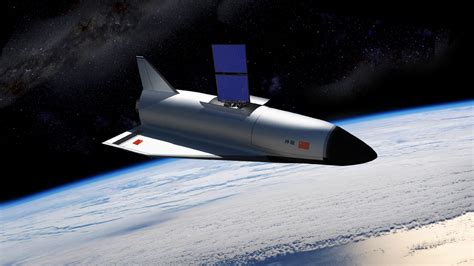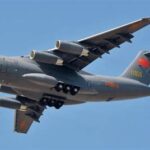
A series of recent flights by Chinese transport aircraft landing in Iran has sparked speculation and raised questions about the nature of the cargo and the purpose of these unscheduled visits. These flights, observed by open-source intelligence analysts, have fueled concerns amid existing international sanctions on Iran and strained relations between the West and both nations.
Multiple sources monitoring flight activity have reported the landings, highlighting the unusual nature of the flights given the current geopolitical climate. While details about the cargo remain unconfirmed, the situation is attracting scrutiny from intelligence communities and international observers. The increasing collaboration between China and Iran, particularly in the economic and military spheres, adds complexity to an already tense geopolitical landscape. The absence of official statements from either China or Iran regarding the purpose of the flights has further intensified speculation.
The flights, reportedly conducted by Chinese military transport aircraft, raise concerns about potential violations of international sanctions and the possibility of technology or military equipment transfers. Given the existing restrictions on Iran’s access to advanced technologies and military hardware, any such transfers could have significant implications for regional security and international efforts to curb Iran’s nuclear ambitions.
Unusual Flight Activity Raises Eyebrows
The specific details of the observed flights remain murky. Open-source intelligence analysts have noted that the aircraft involved appear to be military transport planes belonging to the Chinese People’s Liberation Army Air Force (PLAAF). These aircraft, capable of carrying significant payloads, have been tracked making unscheduled landings at various airports in Iran. The frequency and timing of these flights have deviated from established patterns of civilian or commercial air traffic, contributing to the growing sense of unease.
“The nature of the cargo is unknown, but the flights have raised eyebrows given existing international sanctions on Iran,” reports Yahoo News. The lack of transparency surrounding these flights is a key factor fueling speculation about their purpose. The absence of official notifications or pre-flight announcements, which are customary for international flights, suggests a deliberate effort to maintain secrecy. This secrecy further amplifies concerns that the cargo could be of a sensitive nature, potentially violating international agreements or sanctions regimes.
Sanctions and Geopolitical Implications
The international sanctions imposed on Iran, primarily by the United States and the European Union, are intended to restrict its access to advanced technologies, military equipment, and financial resources. These sanctions are aimed at preventing Iran from developing nuclear weapons and supporting destabilizing activities in the region. The potential for Chinese transport aircraft to be involved in circumventing these sanctions is a serious concern for Western powers.
The United States has repeatedly warned China against providing support to Iran that could violate international sanctions. These warnings have become increasingly pointed in recent years as China’s economic and political ties with Iran have deepened. The current situation highlights the delicate balancing act that China must perform in its relations with Iran and the West. While China has officially stated its commitment to upholding international law and adhering to sanctions regimes, its growing economic and strategic partnership with Iran raises questions about its willingness to fully enforce these restrictions.
The geopolitical implications of these flights extend beyond the immediate issue of sanctions compliance. The deepening relationship between China and Iran is part of a broader trend of shifting alliances and emerging power dynamics in the international arena. As the United States seeks to contain China’s growing influence, Beijing is forging closer ties with countries like Iran that share its skepticism of American dominance. This alignment of interests is creating a new geopolitical landscape in which traditional alliances are being challenged and new partnerships are being formed.
China-Iran Relations: A Complex Partnership
The relationship between China and Iran is multifaceted, encompassing economic, political, and military dimensions. China is Iran’s largest trading partner, and the two countries have signed numerous agreements to expand cooperation in areas such as energy, infrastructure, and technology. China has also been a vocal supporter of Iran’s nuclear program, advocating for a peaceful resolution of the international dispute over Tehran’s nuclear ambitions.
In recent years, China and Iran have also strengthened their military ties. The two countries have conducted joint military exercises and engaged in discussions about potential arms sales. These developments have raised concerns in the West about the possibility of China providing Iran with advanced military technologies that could enhance its capabilities and destabilize the region.
The growing collaboration between China and Iran is driven by a number of factors. Both countries share a desire to reduce their dependence on the United States and its allies. They also have a common interest in promoting a multipolar world order in which no single country dominates international affairs. Furthermore, China sees Iran as an important partner in its Belt and Road Initiative, a massive infrastructure project aimed at connecting Asia, Africa, and Europe through a network of trade routes.
Lack of Transparency and Official Response
The lack of transparency surrounding the recent flights is particularly troubling given the sensitivity of the issues involved. Neither the Chinese nor the Iranian government has provided a clear explanation for the purpose of these flights. This silence has only served to fuel speculation and increase international scrutiny.
The absence of official statements stands in stark contrast to the transparency that is typically expected in international aviation. Most countries routinely provide information about flight schedules and cargo manifests for international flights. The failure to do so in this case suggests a deliberate attempt to conceal the nature of the flights and their cargo.
The international community is closely watching the situation and urging China and Iran to provide a clear and credible explanation for the flights. Failure to do so could have serious consequences for their relations with other countries and could undermine international efforts to maintain stability and security in the region.
Possible Scenarios and Speculation
Given the lack of official information, various scenarios have been proposed to explain the purpose of the Chinese transport aircraft landings in Iran. These scenarios range from the benign to the highly concerning.
One possibility is that the flights are related to ongoing economic projects between China and Iran. China has invested heavily in Iran’s infrastructure and energy sectors, and the flights could be carrying equipment or personnel related to these projects. However, this explanation seems unlikely given the secrecy surrounding the flights and the use of military transport aircraft.
Another possibility is that the flights are part of a military exchange program between China and Iran. The two countries have conducted joint military exercises in the past, and the flights could be carrying military personnel or equipment for these exercises. While this explanation is plausible, it does not fully account for the secrecy surrounding the flights.
A more concerning scenario is that the flights are carrying military equipment or technology that could be used to enhance Iran’s military capabilities. This could include advanced weapons systems, missile components, or technology related to Iran’s nuclear program. If this is the case, the flights would be a clear violation of international sanctions and could have serious implications for regional security.
Another possibility is that China is providing Iran with assistance in circumventing sanctions by supplying it with goods that it cannot obtain through normal channels. This could include items such as electronics, industrial equipment, or raw materials. While this scenario is less alarming than the possibility of military transfers, it would still be a violation of international sanctions and could undermine efforts to pressure Iran to comply with international norms.
Implications for Regional Stability
The situation involving Chinese transport aircraft landing in Iran has significant implications for regional stability. The Middle East is already a volatile region, and any actions that could further destabilize the situation are a cause for concern.
If the flights are indeed carrying military equipment or technology, this could embolden Iran to pursue its regional ambitions more aggressively. Iran has been accused of supporting militant groups in the region and interfering in the internal affairs of other countries. If Iran is able to acquire more advanced military capabilities, it could be more likely to engage in these activities, further destabilizing the region.
The situation also has implications for the balance of power in the Middle East. If China is seen as supporting Iran, this could encourage other countries in the region to align themselves with China, further eroding the influence of the United States and its allies.
International Response and Future Outlook
The international community is closely monitoring the situation and considering its options. The United States has already expressed its concerns to China and Iran and has warned them against taking any actions that could violate international sanctions.
The European Union has also called on China and Iran to provide a clear explanation for the flights. The EU has been a strong supporter of the Iran nuclear deal and is concerned that any actions that could undermine the deal could have serious consequences for regional security.
The future outlook for the situation is uncertain. It is possible that China and Iran will eventually provide a credible explanation for the flights, defusing the situation. However, it is also possible that the situation will escalate, leading to further tensions between China, Iran, and the West.
The key factor in determining the future course of events will be the willingness of China and Iran to be transparent about the purpose of the flights. If they continue to stonewall, the international community will have little choice but to take further action to protect its interests.
Historical Context of Sanctions Against Iran
To fully understand the gravity of the current situation, it’s important to consider the historical context of sanctions against Iran. These sanctions have evolved over several decades and have been imposed by various countries and international organizations in response to different concerns.
The earliest sanctions were imposed in the 1980s in response to Iran’s support for terrorism and its human rights record. These sanctions were primarily targeted at specific individuals and entities associated with the Iranian government.
In the 1990s, the United States imposed broader sanctions on Iran in an effort to prevent it from developing nuclear weapons. These sanctions targeted Iran’s energy sector and its access to international financial markets.
In the 2000s, the United Nations Security Council imposed sanctions on Iran in response to its continued pursuit of a nuclear program. These sanctions prohibited Iran from importing or exporting certain goods and technologies related to nuclear development.
In 2015, Iran reached an agreement with six world powers (the United States, the United Kingdom, France, Germany, Russia, and China) known as the Joint Comprehensive Plan of Action (JCPOA), or the Iran nuclear deal. Under the terms of the agreement, Iran agreed to limit its nuclear program in exchange for the lifting of some sanctions.
However, in 2018, the United States withdrew from the JCPOA and reimposed sanctions on Iran. These sanctions have had a devastating impact on the Iranian economy, and they have led to increased tensions between Iran and the United States.
The international sanctions regime against Iran is complex and multifaceted. It is designed to prevent Iran from developing nuclear weapons, supporting terrorism, and violating human rights. The potential for Chinese transport aircraft to be involved in circumventing these sanctions is a serious concern for the international community.
The Role of Open-Source Intelligence
The identification and tracking of the Chinese transport aircraft flights have been largely facilitated by the use of open-source intelligence (OSINT). OSINT refers to information that is publicly available and can be legally gathered and analyzed. This includes data from sources such as news reports, social media, satellite imagery, and flight tracking websites.
In recent years, OSINT has become an increasingly valuable tool for intelligence analysts and researchers. The vast amount of information that is now available online makes it possible to track events and trends in real-time and to gain insights that were previously only available to governments and intelligence agencies.
In the case of the Chinese transport aircraft flights, OSINT analysts were able to identify the aircraft involved, track their flight paths, and determine their destinations by using publicly available flight tracking data. They were also able to analyze satellite imagery to confirm the presence of the aircraft at various airports in Iran.
The use of OSINT in this case highlights the growing importance of this type of intelligence gathering in the modern world. As more and more information becomes available online, OSINT will continue to play a crucial role in informing decision-making and promoting transparency.
Advanced Analysis Techniques
Sophisticated methods have been used to scrutinize flight patterns and identify anomalies. These techniques involve the use of algorithms to analyze vast datasets of flight information, looking for deviations from established routes, unusual landing patterns, and other indicators of potentially suspicious activity.
By comparing the flight paths of the Chinese transport aircraft with historical data, analysts can identify flights that deviate from normal commercial or military traffic. They can also use machine learning algorithms to predict the likely destinations of aircraft based on their past behavior and other factors.
These advanced analysis techniques are becoming increasingly important in the field of intelligence gathering. As the volume of data continues to grow, it will be essential to use these techniques to sift through the noise and identify the signals that are most relevant.
Frequently Asked Questions (FAQ)
-
What sparked the concerns about Chinese transport planes landing in Iran?
- The concerns stem from unscheduled and secretive flights by Chinese military transport aircraft landing in Iran, raising questions about their cargo amid existing international sanctions. As stated by Yahoo News, “The nature of the cargo is unknown, but the flights have raised eyebrows given existing international sanctions on Iran.”
-
What kind of cargo might these planes be carrying?
- The exact cargo remains unconfirmed, fueling speculation. Possible scenarios include economic project-related equipment, military personnel or equipment for joint exercises, advanced weapons systems, missile components, technology related to Iran’s nuclear program, or assistance in circumventing sanctions with goods that Iran cannot obtain through normal channels.
-
How could these flights potentially violate international sanctions?
- If the planes are carrying military equipment, technology, or goods that are restricted under international sanctions aimed at preventing Iran from developing nuclear weapons or supporting terrorism, it would constitute a violation.
-
What are the potential implications for regional stability?
- If Iran is receiving military assistance, it could embolden them to pursue regional ambitions more aggressively, destabilizing the Middle East. It could also shift the balance of power by encouraging other countries in the region to align with China.
-
What responses have been made internationally regarding the situation?
- The United States has expressed concerns to China and Iran, warning against violating international sanctions. The European Union has called for transparency and a clear explanation for the flights, emphasizing the need to uphold the Iran nuclear deal.
Conclusion
The situation surrounding the Chinese transport aircraft flights to Iran is a complex and sensitive one. The lack of transparency and the potential for violations of international sanctions have raised serious concerns in the international community. The deepening relationship between China and Iran adds another layer of complexity to the situation, highlighting the shifting alliances and emerging power dynamics in the global arena.
The international community will continue to monitor the situation closely and will likely take further action if China and Iran fail to provide a credible explanation for the flights. The future of the situation will depend on the willingness of these countries to be transparent and to uphold their international obligations. The implications for regional stability and international security are significant, making this a situation that demands careful attention and a measured response. The potential transfer of sensitive technologies or military equipment could have long-lasting consequences for the balance of power in the Middle East and beyond. Therefore, a thorough investigation and a commitment to transparency are essential to prevent further escalation and to ensure compliance with international norms. The reliance on open-source intelligence in uncovering and tracking these flights underscores the importance of this tool in modern geopolitical analysis. As technology advances, OSINT will undoubtedly continue to play a pivotal role in monitoring and understanding complex international events.









